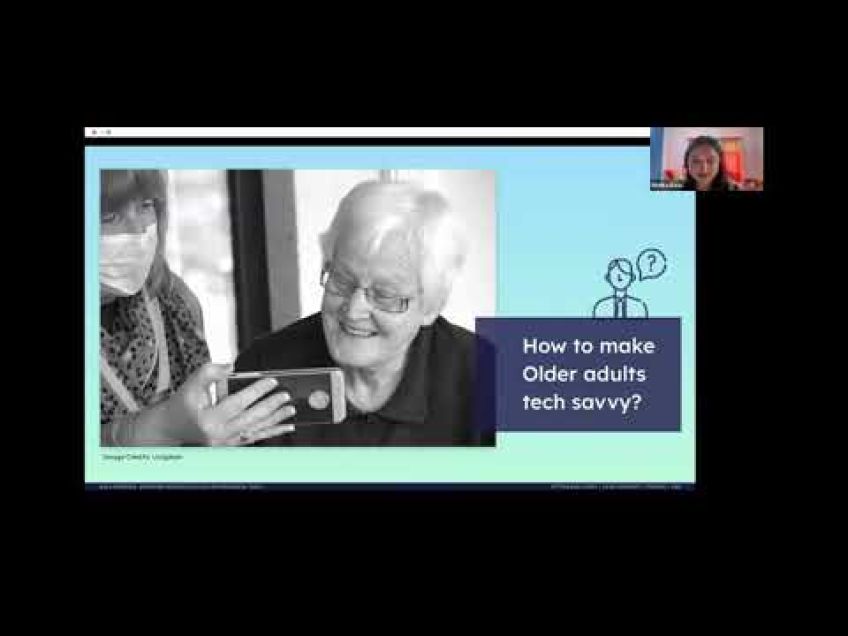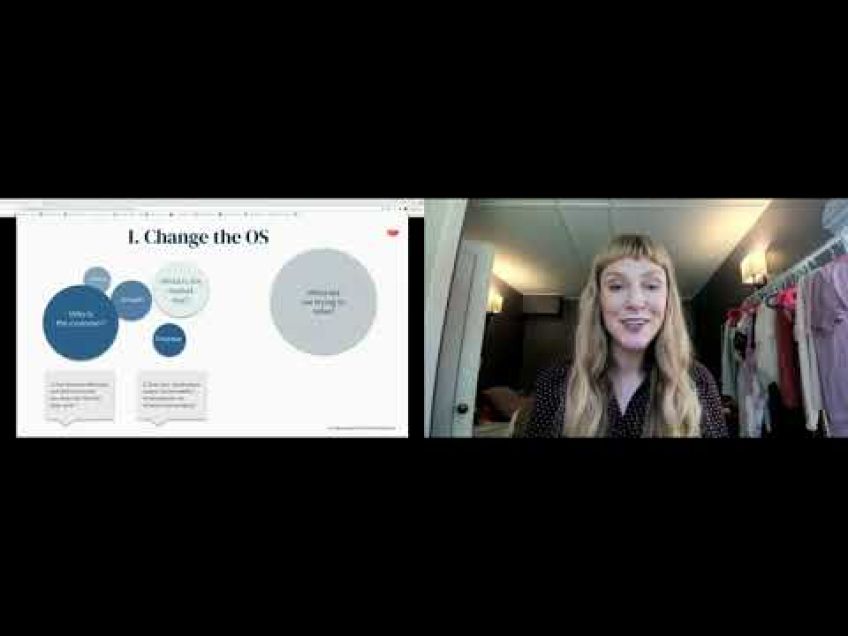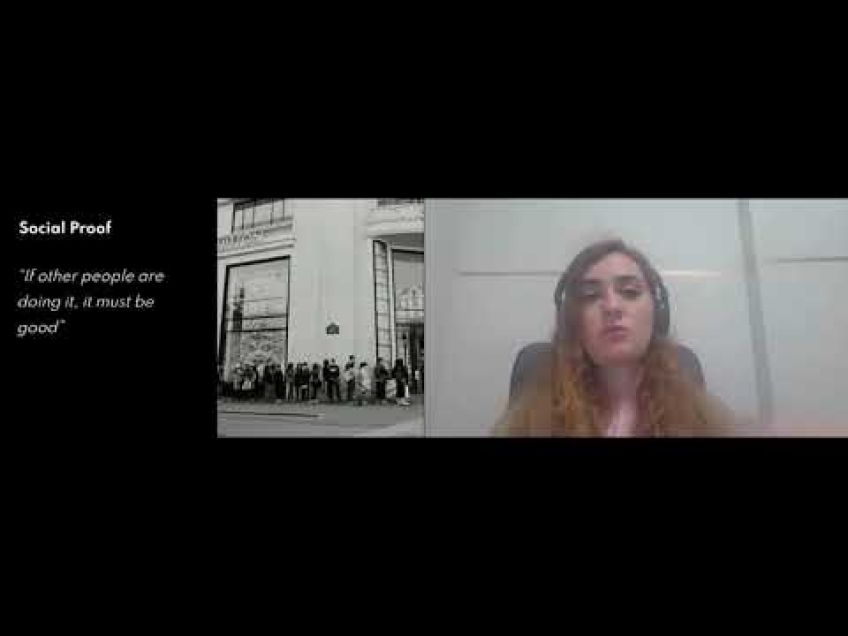Design & Business, setting up design teams for success by Laura Garcia Barrio
The Power of Infusing Design into Tech: Driving Business Success
In today’s competitive global economy, one factor making a striking difference in the success of tech companies is an effective design. Studies have revealed that industries that invest heartily in design teams see a significant payoff for businesses, making design a game-changer.
About Laura Escobar
Before we proceed, to put things in context, let's introduce the mind behind this insightful revelation - Laura Escobar. Laura is the leader of the design and user experience team at Wallapop, a market for second-hand and unique goods in Spain and Italy. She brings to the table a wealth of experience, having held user experience design and research roles at big tech companies such as Google and Uber.
The Crucial Role of Design in Business
The importance of design in business may not be immediately indicative, but when thought about, it's clearer than daylight. In the words of Steve Jobs, design is about how products work - it's about creating incredible user experiences. In the tech world, design becomes an intersection of design research (or design thinking), visual design, and computational/interactive design.
Pillars of Design in Tech
- Design Research: Design research involves constant learning to uncover user needs, pain points, and potential business opportunities. The key here is empathy to innovate in relation to individual customer needs.
- Visual Design: Every tech product must look appealing - the aesthetics matters. This is where visual design comes in, obsessing about the craft and perfecting the 'look-and-feel' of the product.
- Computational/Interactive Design: This aspect deals with designing products for millions of users who will be accessing the product in real time. The focus lies on leveraging technology to build intuitive experiences that are relevant, usable, and delightful.
How Design Maturity Impacts Business Results
Design maturity, in simpler terms, signifies the level of importance an organization places on design and the extent of adoption of design practices. The companies that scored highly for design maturity were found to enjoy numerous benefits including cost savings, revenue gains, and market position improvements. Thus, design maturity proves to be an essential aspect of a business' competitive edge in the market.
Liberty of Design At Wallapop
Whether it is the behavior understanding functions of UUX research teams, imagination-casting designers, content reinforcing UX writing and content teams, the guardians of consistency - system teams, or efficiency-obsessed operation roles, Wallapop respects the spectrum of design roles. The company poses an open invitation to design enthusiasts to join them in redefining the future of tech design.
With design taking on a central role in the business world, one thing is clear - the road to maturity in design is still a long stretch. However, it's the journey, not the destination, that matters the most, and every step contributes to the overall corporate growth. Yet, the question remains - How can your organization embrace the power of design?
Video Transcription
Let's get started. So again, I'm very happy to see like women in tech take a uh an encompassing um be an encompassing stage of all the roles and teams and functions that contribute to, to building uh to building a great tech products.And as Anna discussed, I'm going to be sharing some uh industry data and some thoughts about like why investing in design teams and tech companies is a good idea and it pays off for the business. Um Anna already introduced me but um just uh just to recap, I lead the design and user experience team at uh teams of what uh it's the market for uh second hand and unique goods in uh Spain and Italy. And um uh I joined Wallop about a year ago, but before that, I was um I held user experience design and research role and um bigger companies like Google and Uber. And um this is a bit uh of what we're going to be uh discussing today's today. And uh uh the food for thought that I uh that I want to bring um to discussion today. So let's start with uh some business facts. Um So how old um is the organization where you currently work just for context? Uh What about recently turned nine years old? And it was like many years ago when wallop disrupted the uh second hand and unique good marketplace with the marketplaces with a mobile first approach. Um But uh you know, some companies don't make it that far. So think of a start up failure rate.
Um So nine out of 10 companies that are created do not survive. 80% don't make it past year five. And this is uh uh this is due to a number of reasons, right? So the causes of failure and include uh mi rating market demand uh being with my competition, um pricing, uh cost issues, uh not making friendly products or marketing and so on. So there is a huge amount of creative uh destruction among newcomers. But also this natural selection is also happening at the top of the pyramid among the top performance and most successful businesses. So let's let's look at something else for a minute. So this is a visualization of the Fortune 500 list. The Fortune 500 List was uh started in 1955 by Fortune Magazine and it uh ranks the top 500 corporations in the US by total revenue. And uh you can also see that uh nearly nine out of 10 companies that were on the list uh 60 years ago are no longer on the list. So they um they just um um they, they failed or they merged with another company they organized or uh they just simply are not on the list anymore, which is um which is a positive sign of the dynamism um and um innovation that is happening in the industry.
And it's also a sign that we are in a hyper competitive, global economy. If you look at the graphic, you will see the particular Effervescence in the tech arena in the last 50 years. And you will also see that uh traditional industries have gone through a digital revolution like retail or healthcare. So last year, the top three companies on the list were digital uh or had a strong digital component. The number one was Walmart. Number two is Amazon and number three was Apple. Uh So we uh we briefly discussed the the reasons why start ups fail. But here you have a bit of the recipe for success and what makes companies successful, right? And you will see that serving customers offer high quality products and services and offer great customer service are critical for business success. And while building uh great products involves uh different teams and roles. Key ingredients of success are closely connected to the core of value that design and user experience team bring to the table. Given the rapid rise and consumer expectations, the instant access to global information and reviews the blurring of lines within hardware software and services design needs.
To be a differentiator and only the best designs will stand out from the crowd. So let's talk about design and business. So what do I mean by design? So this is what Steve Jobs meant by design. Um creative, a genius of creative disruption of visionary in the creations of products, ecosystems and experiences for Steve Jobs. Uh design is about how products work. So design is about creating great user experiences. It's about building products and experiences that are relevant that are useful for me that have that add value to my life, that are usable, that are frictionless to use, that allow me to move forward uh towards my goal without hesitation and that are delight that are delightful, that add um that connect emotionally with me in a positive manner.
So in tech uh design refers to a process and it's um and and it it happens at the intersection of all these three areas. Let's start with the middle, let's start with design research or design thinking. So this refers to the content, constant learning process by which we uncover user needs pain points and opportunities for the business. This is about um using empathy to innovate in relationship to individual customer needs. Uh to the left, we see uh the classical definition of design more connected with visual design, which has to do with with how the product looks, but how appealing it is with the aesthetics, with uh with uh with the craft and the ultimate like um um finished product. And uh on the on the right, you will see that the third area for design is um computational design or interactive design. This is about designing for billions of users that are going to be accessing your product in real time. It's about designing at scale. It's about leveraging uh the power of technology to build uh relevant, usable and delightful experiences. So you will see the design works at the intersection of all of these factors. And ultimately, our mission is also to have an impact on business results. So we aim to turn user favorability and user engagement into business growth. And this aspect of uh design driven business growth is something that a number of studies have started to quantify in the industry.
Um such as a case of a huge uh study conducted by mckinsey over the course of five years where they uh tracked design practices of uh 300 companies in different countries and different industries. Uh They uh they recorded financial data, they recorded design uh actions and processes, interviewed executive leadership, design leaders and they concluded that um design best performers increase the revenue and shareholder returns at twice the rate of their industry counterparts.
And here you will see uh the charts uh that illustrates what I just uh what I just referred to. So mckenzie found out that companies that put the user at the heart of business decisions and they have a constant learning approach, have better business performance. So what was the recipe, what was the recipe for success? So, they also identified four critical areas and four critical spaces and themes for companies to take on um to best leverage um the value of that design breaks its table. So um we have like analytical leadership where uh design um design impact um is measured with the same rigor as uh revenues or costs or other financial indicators. Um And it is about building a strong vision that explicitly commits organizations to uh building great uh product experiences, right?
It's like, for example, is like the first time I Google like 10 principles. Um So follow the user and also follow or Disney is like, wow, users, it is like just like have committed, have commitment from leadership um and track or rigorously the impact of design. Uh We uh they also identified that um top performers put user experience from them, Tinder in the uh the product um uh in the company culture uh that they uh soften internal boundaries um that they uh between like products or um areas of ownership or um um align uh teams towards certain goals and they consider the user experience in a holistic um in a holistic manner, right?
So they um user experience may be delivered through certain through different channels, different touch points, different moment in time. So start with the journey. Don't start with the functional uh don't start with the functional requirement and think holistically of all the channels where you're going to be delivering that experience. Um They have uh uh they, they have a, a cross functional uh uh talent approach where um the design uh team is connected to other functions and teams where um where they're breaking silos, where improving the user experience is a collective responsibility of everyone in the organization and they have a continuous iteration, um mindset um fail fast and iterate uh leverage the power of research, leverage data insights, leverage market data to um to understand um what the opportunities are and to and, and, and shape the future.
So companies that tackle these four priorities are boosting their chances of becoming more creative organizations and, and and consistently build great products and services. So we were discussing the uh a rosy picture. We were uh we were discussing the best case scenario, but what mckinsey has uncovered as well is that in general, um we are pretty far from that ideal state that about like 40% of the companies that they surveyed are not conducting research before they launch products. And in many companies, uh the inability to measure uh to measure design uh results and, and design um contribution is also um is also uh is also having an impact in terms of like the commitment that um from leadership to um to leveraging design. So all in all a lot of room for a lot of room for improvement. Now, let's look at design in the organizations. Um So maybe uh you have a combination of uh these roles of your companies, you have um you have um insights, um generating functions like uux research, uh understanding your behaviors, needs and motivations uh to inform like uh people first experiences and products. You have uh designers that imagine creating a product and, and shape um and turn these opportunities into something concrete.
Uh You have uh UX writing and content teams that um that leverage, that leverage content to um to make the part to reinforce the users along the journey and to eliminate any um um any data that may may uh may occur along the way, we may have likes system teams that are the guardians of consistency, shared standards across touch points and channels and that um that work on making like design and type more scalable and you may have like operations roles that uh that we focus on process tools and documentation and efficiency.
You may have design teams working with a variety of roles, right? Like the ones listed on this site, you may have design teams embedded in our teams and centralize and maybe a hybrid model, maybe operating in a hybrid model. But regardless of how the team is set up today, there is something that is a critical factor in terms of assessing the impact that design would have on the organization, which is design maturity. Uh And this is the uh this is um this is also um uh insights and um and, and data from another study conducted by Envision a design and productivity software company that surveyed over 2000 organizations worldwide. And um came up with the following like levels of maturity in the in the organizations in terms of um uh in terms of like two variables, right, like the impact of design and the adoption of design practices in the organization. So on the, on the starting level level one um design makes uh products look good. So they are basically implementing someone else's decisions with regards to what needs to be um uh what needs to be built and and how, how this needs to look and work, right? So they may be doing wireframe like coms like interactive prototypes.
Uh while level further uh design is already working as a facilitator and a connector within the organization where they're running workshops, they're connecting people and ideas, they're doing rapid sketching and they're like uh incorporating um input from different different stakeholders and teams. Level three designers are architects.
Uh design is a scalable operation. Um Design is uh working very closely with part teams participating in planning and part decision. Um starting to have more tools, process templates and, and written documentation on level four designers are uh are making more like data driven decisions and they're working very closely with analytics and data science to uh find like cheap uh ways to test ideas, validate hypothesis and um and iterate and on level five, design means business.
So design is actively shaping the vision and shaping the future and is um is um is partnering very closely with uh with company leadership. So they also notice that uh design maturity is impact, is impacting business results. So companies with a high design maturity uh have all these benefits with regards to cost savings, revenue gains and market position improvements. So here's about uh here's also like a list they identified of all the areas that benefit from uh a mature design function. So on, uh companies where uh design teams have a level five of maturity, they are um they're using technology and designed to refine standards for customer trends and business process excellence. They participate in business strategies and um and something that uh defining business strategies and something that um this, this um study identified as well is that this um this like top performers of this, most mature teams um are um are um currently at different industries.
So it's not like like the big tech companies. So this is also what they uncovered. So collectively, we have a long way to go. So more than 60% of the companies that they uh that they audited are not even close to leveraging design teams to their full potential. So what is the room for improvement in your organization? Um where are you going to start today? I hope this provided some food for thought. Thank you very much for your time and attention and just a heads up that wall is hurry. We have a number of roles open in the user experience and design teams as well as product as well as tech. So please take a look at your art, our careers page and uh reach out if you are interested in any of the positions. Thank you very much for your time.
Absolutely. It was a pleasure to have you with us. Let's give you a word show around and be close to Laura for this really insightful presentation. Very interesting, great overview. Yeah. So fantastic presentation. Top Laura, so many positive comments about your session. There is this presentation.
This is a really good one. I would love to share. Um Just a second. This presentation should be brought to any company with a design team on it. So, yeah, the presentation made somebody's day. Fantastic. So many, so many cheers and like round of applause is amazing. Wow, great Lauer. Like people are really, really happy about your session and perfect timing. And as Lauer mentioned, la A pop is hiring, so make sure to drop by their booth. And if you have any questions, you may connect with Laurer also on linkedin. Does that sound good, Laura Small Interim or follow Laura's journey? Yeah, absolutely. Ok. Fantastic. Thank you so much, Laura. Stay with us for the rest of the conference today tomorrow and on Friday, if you can, and it was really a pleasure to have you with us today. Bye
bye. Thank you very much, Anna. Thank you very much everyone.




